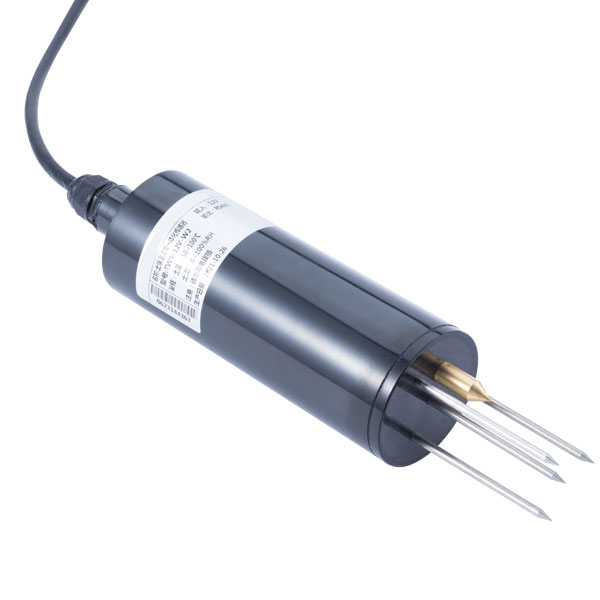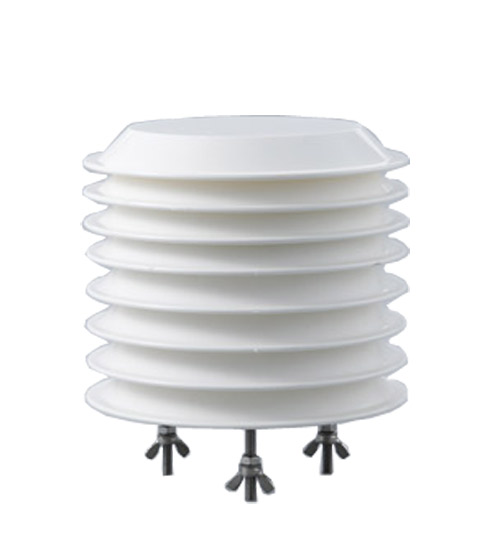

 Consumer hotline +8618073152920
Consumer hotline +8618073152920 WhatsApp:+8615367865107
Address:Room 102, District D, Houhu Industrial Park, Yuelu District, Changsha City, Hunan Province, China
All products
Soil salinity EC integrated sensor is a device to measure the conductivity value of solutions for various soils. Widely used in scientific experiments, water-saving irrigation, greenhouse sheds, orchards, grain storage and other kinds of particle conductivity measurement.
Product Details
Soil salinity conductivity integrated sensor Product introduction:
◆It has the function of simultaneous detection of soil salinity and electrical conductivity;
◆Simple structure, stable performance and convenient operation;
◆Using advanced ceramic technology, directly buried in the soil, maintenance-free;
◆High integration, small size, low power consumption, easy to carry;
◆Real realization of low cost, low price and high performance;
◆Long life, convenience and high reliability;
◆Support secondary development;

This product is suitable for agricultural irrigation, flower gardening, grassland pastures, soil rapid testing, plant cultivation, scientific experiments and other fields. It can also be used for anti-corrosion monitoring of underground oil and gas pipelines and other pipelines.
Soil salinity conductivity integrated sensor Technical Parameters:
Salt measurement range: 0~8000mg/L
Resolution: 1mg/L
Accuracy: ±5%
EC measurement range: 0~15 mS/cm
Resolution: 0.01 mS/cm
Accuracy: ±5%
Power supply mode:
□ DC 12V-24V □ Others
Output form:
□ Voltage: 0~5V
□ Current: 4~20mA
□ RS485
□ Other
Working environment:
Temperature: -10℃~60℃
Humidity: 0~95%RH
Shell material: waterproof plastic shell
Transmitter size: 80*60*33mm
Wire the sensor according to the instructions in the wiring method, and try to place the sensor in a place with low terrain, close to the water source, or a place with relatively moist soil.
There are two methods for field installation: excavation section and ground drilling.
1. The excavation section turns darkly
Dig a soil profile where the sensor needs to be buried, and determine the position and depth of the sensor on the profile. From bottom to top, use a small earth borrower with the same (or slightly larger) outer diameter as the sensor, and dig out a horizontal depth of about 10- 20 cm soil hole, insert the sensor horizontally to the bottom of the hole, and then fill it with soil and compact it. Make sure that the ceramic element of the sensor probe is in close contact with the soil. It is best to lead the sensor wire away from the vertical section at a certain distance to the ground, so as to avoid rainwater flowing directly around the sensor along the wire and affecting the authenticity of the test results. The plugs of several sensors embedded in a section are fixed on a simple bracket in sequence. And wrap it in a plastic bag to prevent soil particles and rainwater from entering, after the sensor is buried. Backfill and compact the profile pit according to the original soil layer order and bulk density, and keep the ground cover the same as the original.
2. Ground drilling installation
In the place where the sensor needs to be installed, use a soil extractor (Luoyang shovel, twist soil drill or special soil extractor) to drill a soil hole from the ground down to a predetermined depth, and use a thin rod with an open end to support the sensor to the bottom of the hole, so that It is in close contact with the soil, and the thin rod is slowly pulled out. Then backfill and compact in layers.
Corresponding to the embedded sensor, a set of soil moisture tension meters can be embedded at the same time about 20 cm away from the sensor to observe the change of soil moisture.
After the installation is completed, turn on the power supply and the switch of the collector, wait for a period of time to make the salt solution reach equilibrium, and then the soil salinity at the measurement point can be obtained.
Sensors & Weather Stations Catalog
Agriculture Sensors and Weather Stations Catalog-NiuBoL.pdf
Weather Stations Catalog-NiuBoL.pdf
Related recommendations
 Soil Temperature Moisture Sensor 4-···
Soil Temperature Moisture Sensor 4-··· Air temperature, humidity and atmos···
Air temperature, humidity and atmos··· High precision soil pH sensor pH de···
High precision soil pH sensor pH de···
Screenshot, WhatsApp to identify the QR code
WhatsApp number:+8615367865107
(Click on WhatsApp to copy and add friends)